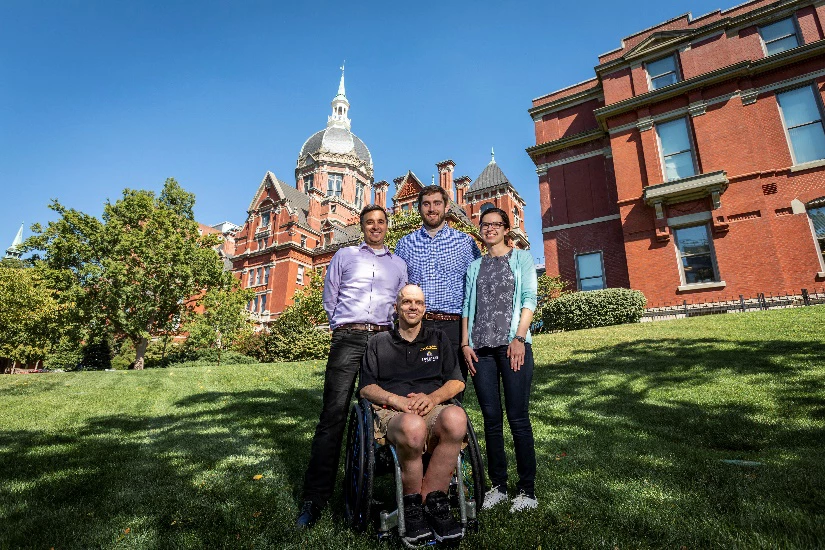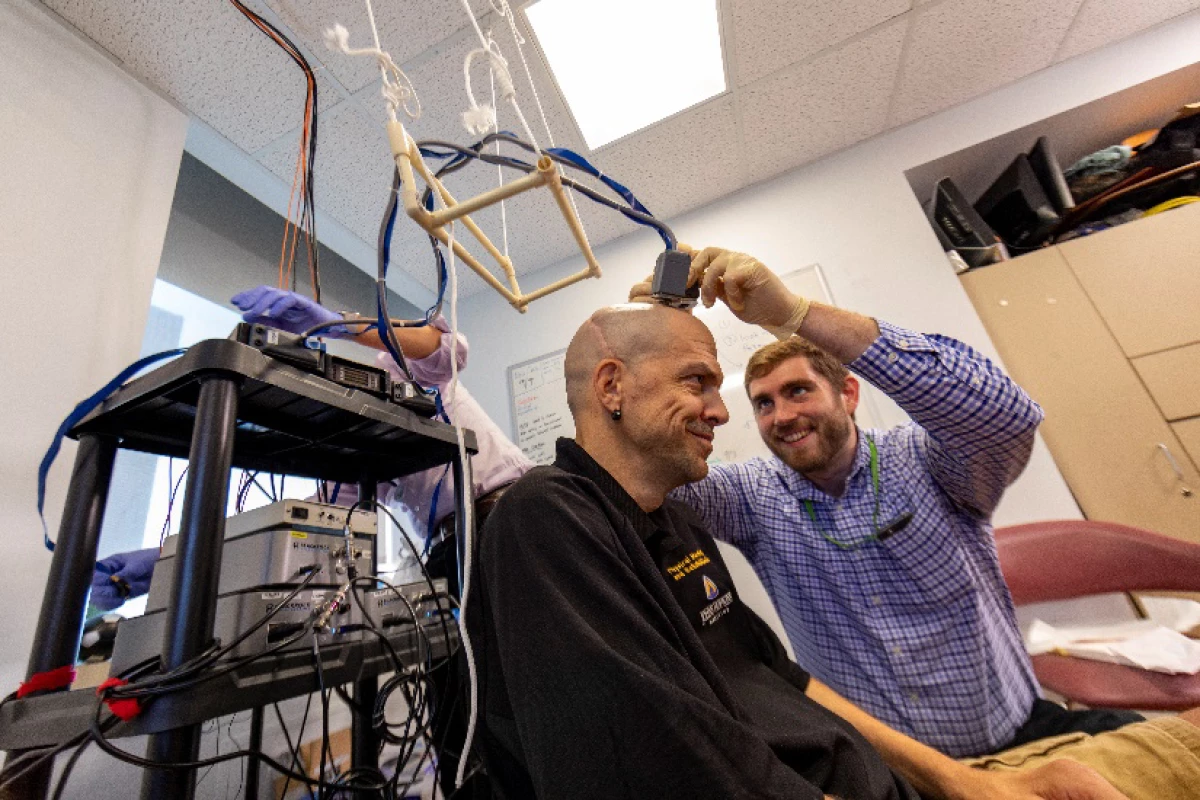Brain-connected machines that capture and translate electrical signals are showing great promise across a number of areas, but one with massive potential is the world of prosthetics. Scientists exploring these possibilities at Johns Hopkins University are now reporting a big breakthrough, demonstrating a system that enables a quadriplegic to control two prosthetics arms at once using only his thoughts, and also feel a sense of touch coming back the other way.
The team at Johns Hopkins University has been making some exciting progress in this area through its Revolutionizing Prosthetics program, which was launched by DARPA in 2006. In 2016, we saw a double amputee use his brain to control two of the team’s Modular Prosthetic Limbs (MPLs), bilateral shoulder-level prosthetics that enabled him to do things like move cups between shelves, a first for this kind of research.
This system worked via custom sockets which both supported the artificial limbs and hooked them up to nerves in the patient’s torso which, following a treatment regime, had been trained to provide specific control movements for the prosthetic limbs. Five years on, the team has made some advances.
“As we integrated new capabilities into the MPL, such as fingertip sensors for force, acceleration, slip and pressure, we started to ask ourselves, ‘what is the best way to feed this information back to our study participants so that they would be able to interact with the environment just as able-bodied people do?’” said project lead Dr. Francesco Tenore.
Now working with spinal cord injury patient Buz Chmielewski who is paralyzed from the shoulders down, the team devised a system that would not only allow him to control two limbs at once, but receive tactile feedback at the same time.

“We are trying to enable a person with quadriplegia to use a direct neural interface to simultaneously control two assistive devices and, at the same time, feel touch sensation when the devices make contact with objects in the environment,” explained Dr. Brock Wester, a biomedical engineer and principal investigator for the study.
In pursuit of this goal, the team carried out a first-of-a-kind surgery in January this year, implanting a pair of electrode arrays on both sides of Chmielewski’s brain. These were fixed to brain regions responsible for movement and touch sensation, and then the team got to work studying the signals controlling specific movements in addition to how the brain responds to tactile stimulation of the Modular Prosthetic Limb.
“For the first time, our team has been able to show a person’s ability to ‘feel’ brain stimulation delivered to both sides of the brain at the same time,” says technical lead on the project, Dr. Matthew Fifer. “We showed how stimulation of left and right finger areas in the brain could be successfully controlled by physical touch to the MPL fingers.”
The team describes the stimulation of these finger regions of the brain as “very focused,” owing to the 96 electrodes making up the arrays implanted on either side of Chmielewski’s brain. While excited about their progress so far, the researchers are intent on continuing to improve the system and possibly bring other devices into the mix.
“Ultimately, because this is the world’s first bilateral implant, we want to be able to execute motions that require both arms and allow the user to perceive interactions with the environment as though they were coming from his own hands,” Tenore said. “Our team will continue training with our participant to develop motor and sensory capabilities, as well as to explore the potential for control of other devices that could be used to expand a user’s personal or professional capabilities.”
The first video below shows the system in action, while in the second video Chmielewski shares some impressions on using it for the first time.
Source: Johns Hopkins University




